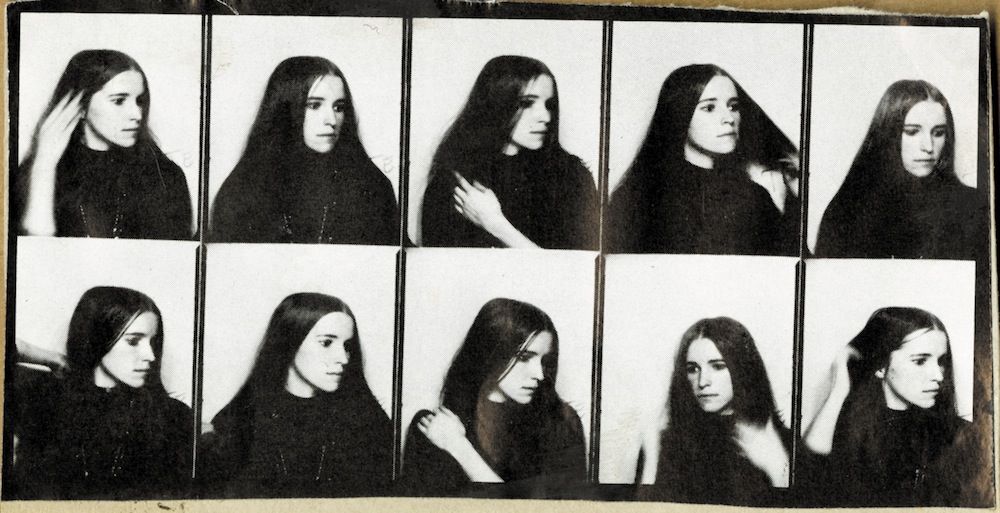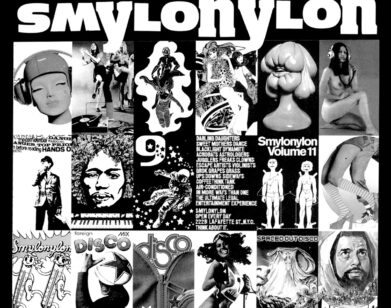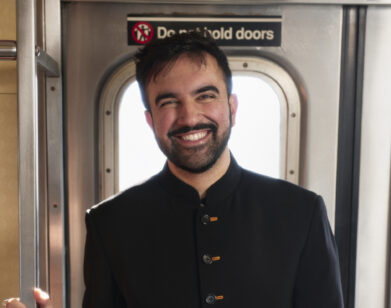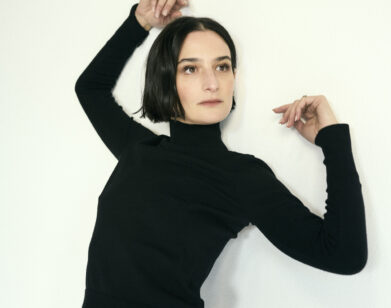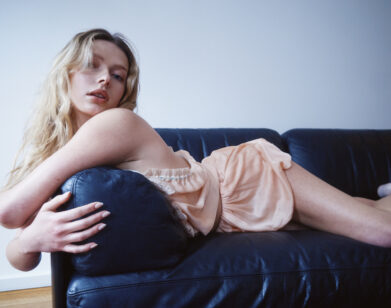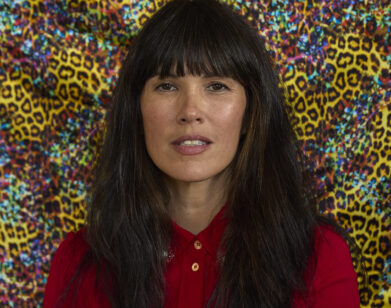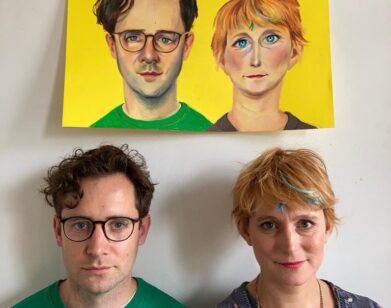New York State of Mind
New York School of Painters & Poets: Neon Daylight, a new monograph published by Rizzoli and edited by Bill Berkson, Larry Fagin, and Allison Power, explores just that: the influences, work, and legacy of a collaborative collective of artists living in New York City after World War II. While most meditations on the New York School tend to focus on either literature or visual art, Berkson, Power, and Fagin present the two mediums in conversation.
Here, Power discusses the making of the monograph with her friend the poet Adam Fitzgerald.
ADAM FITZGERALD: Sitting before me is a hardbound copy of New York School Painters & Poets: Neon in Daylight just published by Rizzoli and edited by yourself. It’s over 300 pages and must feature at least 500 different lush illustrations: paintings, photographs, manuscripts, letters, and other ephemera. Could you start by explaining the range of content within this book: what it includes and what it doesn’t, and how you came to be involved in this massive project?
ALLISON POWER: Yes. There are over 500 illustrations—maybe even over 600, I stopped counting—of paintings, portraits, and drawings; mixed-media collaborations; magazine, mimeo, and book covers; film and home movie stills; and, of course, photographs, including a beautiful selection of black-and-white photos by Rudy Burckhardt and many never-before published snapshots culled from artists’ personal archives. People were very generous, opening up their homes and archives to us.
To give you an idea of the range–on one spread you’ll find the collaboration by Frank O’Hara and Joe Brainard, Cherries, across from a photo of Brainard and his apartment/studio in the East Village in the early ’60s. On the next spread you’ll find a suite of covers: C Magazine, edited by Ted Berrigan, and C Comics, edited by Joe Brainard. On the following pages are full-page reproductions of collaborations from an issue of C Comics.
In addition to visuals, we made a point to reprint over 50 original texts and excerpts, like a James Schuyler review of Alex Katz from ArtNews and a letter from Frank O’Hara to Jasper Johns giving him a reading list (my personal favorite), as well as collaborative poems, like “The Car” by Kenneth Koch and Jane Freilicher from the famous Locus Solus magazine and an excerpt from The Basketball Article by Bernadette Mayer and Anne Waldman.
What the book doesn’t include: Well, it doesn’t include material from before 1935 or after the mid-1980s. We had to cut the book off somewhere, and it seemed natural to end in the mid-’80s when the climate changed—people died, moved away, became associated with other “schools.” Which isn’t to say the so-called New York School ended then; there are of course “New York School” members still working and collaborating today.
So this volume primarily focuses on the ’50s, ’60s, and early ’70s, although, we begin in 1936 with what I like to call the forefathers of the New York School—Bill and Elaine de Kooning, Rudy Burckhardt, and Edwin Denby—who really set the stage for who we know as the “first generation.”
FITZGERALD: Incredible. How did you come to be involved with the project?
POWER: Well, I’m a poet, and, as you know, Adam, I’ve been actively obsessed with the poets and painters associated with the New York School since college. When I moved to New York, my obsession went full-throttle, inspired by going to readings at the Poetry Project and meeting second generation poets like Paul Violi—my dear mentor—Bernadette Mayer, Charles North, Tony Towle, and, of course, Larry Fagin and Bill Berkson, the advisory editors to this book. Around 2008, I was a very young, enthusiastic, somewhat naïve editor, and had become confident in putting together large format, illustrated volumes. I wondered why there had never been a big book on the New York School. I knew of the books focusing on specific members—like Ferguson’s In Memory of My Feelings and Lehman’s The Last Avant Garde. But no one had done the big, comprehensive book. Now I know why!
I began speaking to Larry [Fagin] and Bill [Berkson], who quickly looped in Carter Ratcliff, who wrote one of the forewords to this book. We began putting a book proposal together. Around that time, Bill and Larry had become acquainted with Jenni Quilter, who had written an essay for the Tibor de Nagy catalogue Painters & Poets. Once we got Jenni on board, the team was complete.
FITZGERALD: What struck me first about New York School Painters & Poets is the immensity of its scope, much larger than I could have ever imagined, even knowing many of these poets, and at least of a few of the painters, well. Were you at all surprised—or daunted—by the extent of the resources you could have drawn upon? Serious collaboration between artists often proves to be the exception but, for these artists, it seems like it was the rule.
POWER: It was totally overwhelming. There was a time when I thought we’d never finish—we postponed the book twice. This book was a collaboration; while it took longer to complete with multiple parties involved, it allowed for that immense scope, to use your words. Bill and Larry’s knowledge of this material is endless and Jenni’s research was tireless.
At the project’s onset, the decision was made to focus on the collaborations, which are really at the heart and spirit of this community and its story. It was a way of life—a “Modus Vivendi”, as Ratcliff calls it. More often than not, they were collaborating because it was an excuse to hang out, or they were already hanging out and became inspired to make something together. As individuals, each were prolific, and sometimes not even in New York—as you know, Ashbery was in Paris for much of the [late ’50s and early ’60s]. But what makes the community so [special] is the collaborative spirit they cultivated. Jenni includes this great quote by Koch in her text; he said, “We inspired each other, we envied each other, we emulated each other . . . we were almost entirely dependent on each other for support. Each had to be better than the others but if one flopped we all did.” It’s the kind of book I wish I had access to all these years, especially when I was younger and discovering the connections.
FITZGERALD: Why was it so important to enlarge the context by beginning with forefathers, and continuing beyond the most famous figures and collaborators, such as O’Hara and Rivers, through the ’70s, with emerging figures like Alice Notley and Eileen Myles? Also, could you explain more your decision to end circa 1975?
POWER: Well, Edwin Denby, Rudy Burckhardt, and de Kooning really set the proverbial stage for the first and second generations and remained steady figures in the New York School circles. They begin the story, driven by friendship. They were active and on the scene alongside their younger counterparts. These guys were revered, admired, and respected by Koch, O’Hara, Padgett, Waldman, etc. They also collaborated together. Think of Burckhardt’s film MOUNTING TENSION starring Ashbery, Freilicher, and Rivers. The story of the New York School painters and poets begins with Denby & Burckhardt, not with Ashbery, O’Hara, Koch, & Schuyler, who arrived onto a scene that was already in motion. I’m talking about the Artist’s sessions at Studio 35 and panels at the Club and Waldorf Cafeteria. Not to mention the term “New York School” was of course used to name the group of painters (de Kooning, Pollock, Rothko, etc.) long before John Bernard Myers re-appropriated the term to describe his poets and painters. So we wanted to make sure the groundwork was laid out. I think this was especially important to Jenni—and I think it was the right way to start the book.
To continue well into the 1980s and beyond would have been stretching the story. Things began to change in the ’70s and were changing even more so in the ’80s. People moved away, had families, procured serious jobs—they were no longer hanging out until early morning making stuff together. Brainard stopped making art. Bill Berkson moved to Bolinas and then San Francisco. Anne Waldman founded Naropa. Barbara Guest moved to California. Central figures like Burckhardt and Berrigan passed away. The social scene changed. Of course there were and still are “New York School” members working and working together, but it wasn’t and isn’t the same. It became different. There was a dispersion. So when someone talks about third or forth generation New York School, it’s a stretch. And it was important that we acknowledge a cut-off, even if amorphous. We don’t argue that there’s any exact date. I like to think of those who might be called third or fourth generation not as members but as relatives or cousins. The New York School is a family after all. There are those who share the aesthetic, New York School attributes or features, but there are also other influences, and those influences metamorphosize and are then passed down.
NEW YORK SCHOOL PAINTERS & POETS: NEON DAYLIGHT IS NOW AVAILABLE FROM RIZZOLI. ADAM FITZGERALD IS THE AUTHOR OF THE LATE PARADE (NORTON/LIVERIGHT) AND THE EDITOR OF MAGGY. WITH DOROTHEA LASKY, HE CODIRECTS THE ASHBERY HOME SCHOOL IN HUDSON, NEW YORK. HE TEACHES AT NYU AND RUTGERS AND LIVES IN THE EAST VILLAGE.

